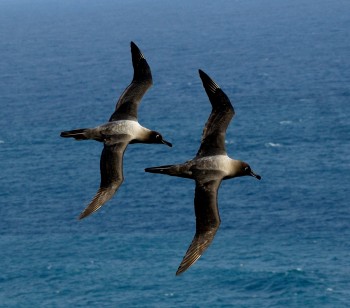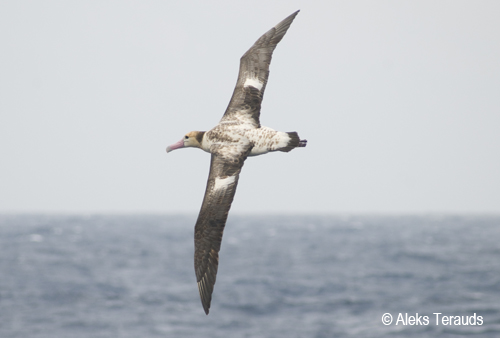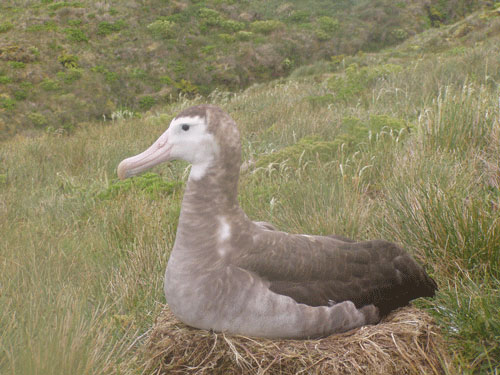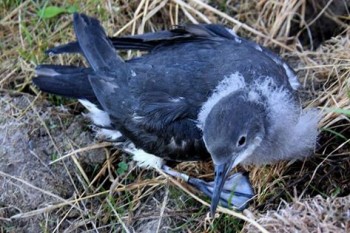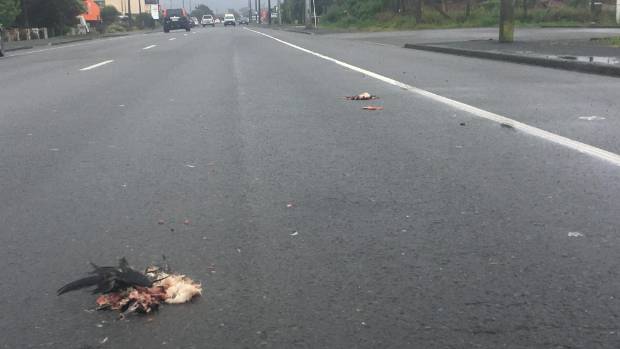On 22 June 2012 domestic dogs entered a Laysan Albatross Phoebastria immutabilis colony on private but unfenced land in Moloa'a on the Hawaiian island of Kauai, killing eight chicks and injuring five more a few days before they were expected to fledge (click here). The chicks had only been banded on the previous day.
The five wounded birds were rescued by Kim Steutermann Rogers, Hob Osterlund and Jeanine Meyers of the Kauai Albatross Network which monitors albatrosses on Kauai rural lands. They were then taken into care by Tracy Anderson of the Save our Shearwaters (SOS) programme of the Kauai Humane Society. One chick had to be euthanized but four, once they had recovered from their injuries and had been deemed waterproof following washing, were transferred to the Kilauea Point National Wildlife Refuge in July from where they all successfully fledged after hand feeding within the fenced site.
So far, two of the four colour-banded birds, A432 and A441, have been resighted ashore. A441 was first recorded post-release at Kaena Point National Wildlife Reserve (KPNWR) on the nearby island of Oahu in October 2015 as a three-year old by Lindsay Young of Pacific Rim Conservation. It was next seen back on Kauai in the 2016/17 breeding season by Hob Osterlund, but is yet to be recorded breeding.
A432 is the second from the 2012 incident to be re-sighted post-release. It had several injuries that required suturing and was in shock at arrival at SOS. In January 2017 during the previous breeding season it was photographed by Hob Osterlund displaying as a four-year old on Kauai’s north shore. On the first of this month the rehabilitated bird, considered to be a female, was photographed on Kauai by Hob incubating as a five-year old. Since then a changeover has occurred at the nest with an assumed male, K855, taking over incubating duties. This bird hatched out in 2010 and is believed to be a first-time breeder like its rehabilitated partner. Fortunately their chosen breeding site is fenced so they should not be at risk to predators.
No definite attacks on Laysan Albatrosses by dogs on the north shore of Kauai have been reported since the last known incident in 2013 (click here), although an attack by a free-ranging dog causing an injury to an albatross occured in the Pacific Missile Range Facility Barking Sands (PMRF) on the west side of the island in 2015. Fortunately this bird was successfully rehabilitated by SOS and has been sighted subsequently several times within the KPNWR. In addition to Laysan Albatrosses, breeding Wedge-tailed Shearwaters Ardenna pacifica on Kauai are reported regularly as being attacked by dogs; click here for a report of an attack that killed 33 birds in the PMRF in August this year. Tracy Anderson of Save our Shearwaters advises ACAP: "we get orphaned [shearwater] chicks and mangled adults from colonies all over the island every year due to dog attacks".
Kim Rogers, who monitors rural properties where Laysan Albatrosses breed on Kauai, writes to ACAP: "we’ve had confirmed [feral] pig attacks on Laysan Albatross, sadly, over the past four years - approximately a dozen [incidents] of suspected pig predation. Either the birds are completely obliterated - nothing left but feathers; killed outright, their bodies found in fairly gruesome condition; or massively injured but subsequently euthanized."
PHOTO PORTFOLIO
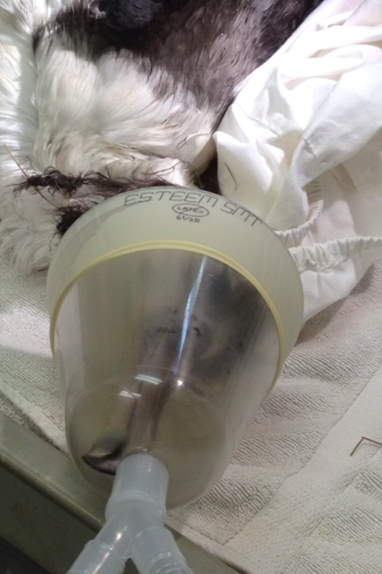
A432 is anaesthetized and sutured...
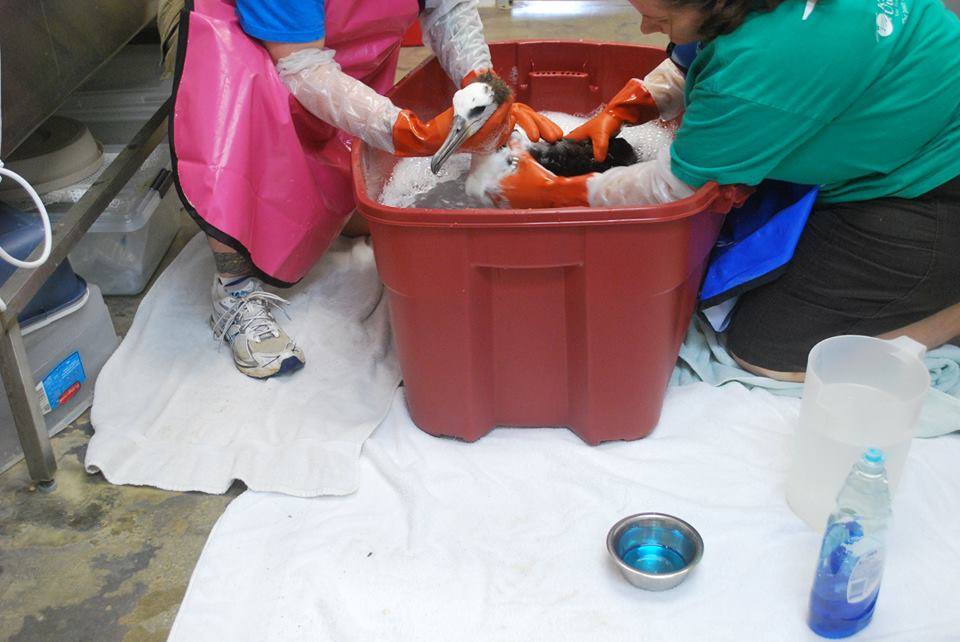
... and washed to help restore waterproofing
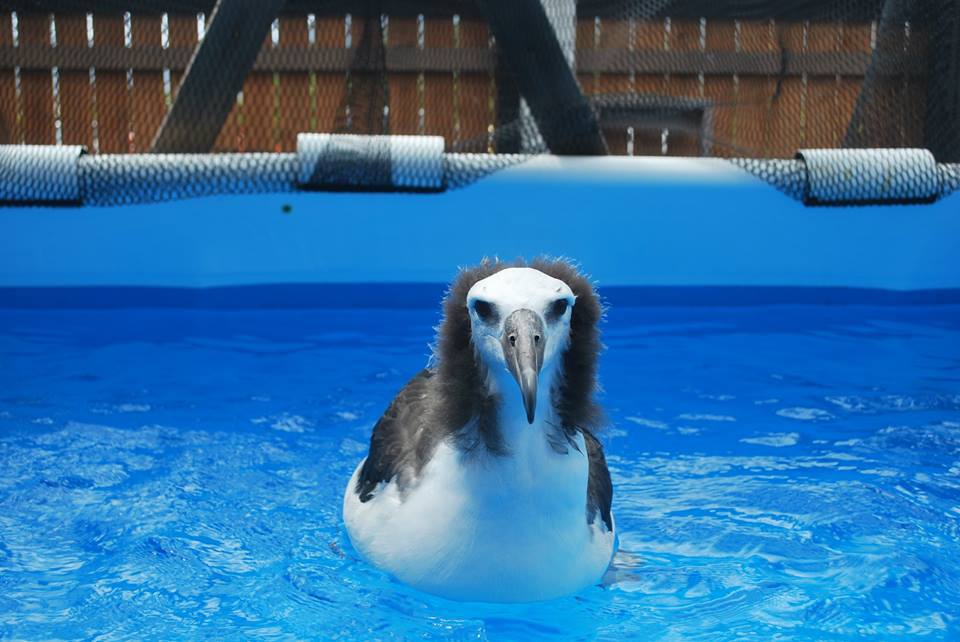
A432 swims in the SOS conditioning pool to assess waterproofing
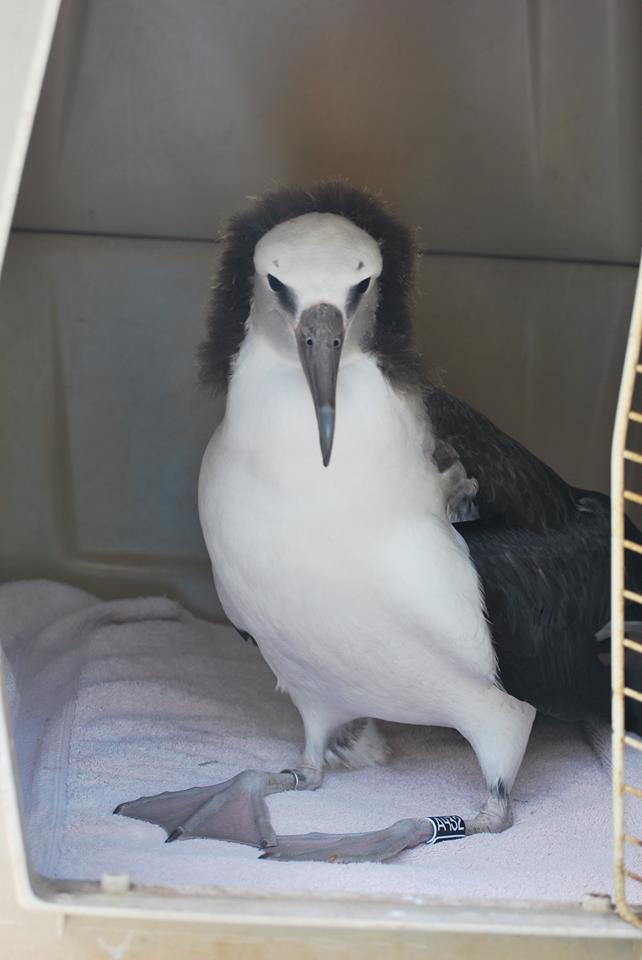
A432 on the day of release in the Kilauea Point National Wildlife Refuge after 19 days in care
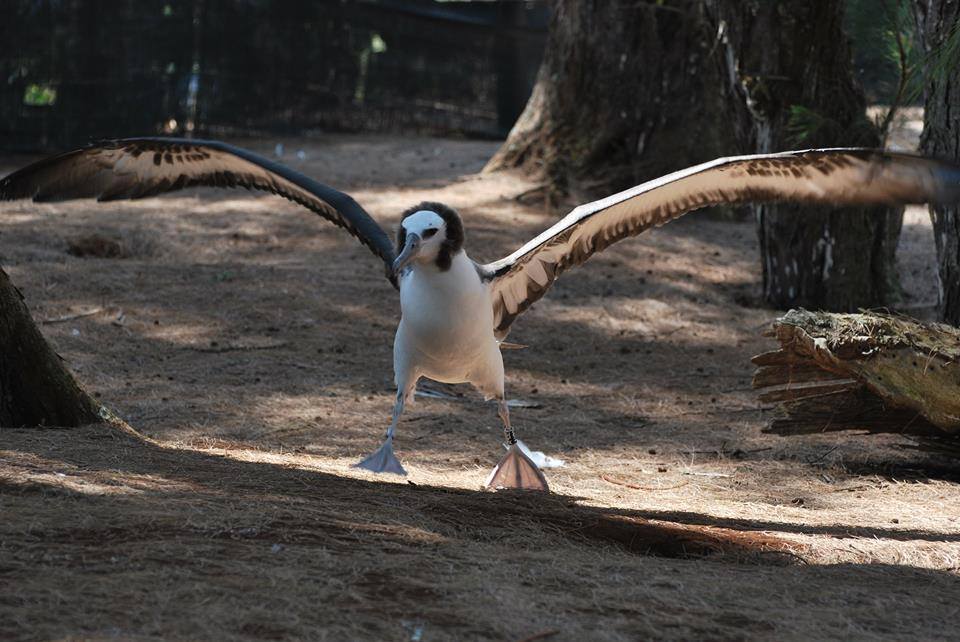
About to fledge the day after release: A432 in the Kilauea Point National Wildlife Refuge
Photographs above from Tracy Anderson of Save our Shearwaters
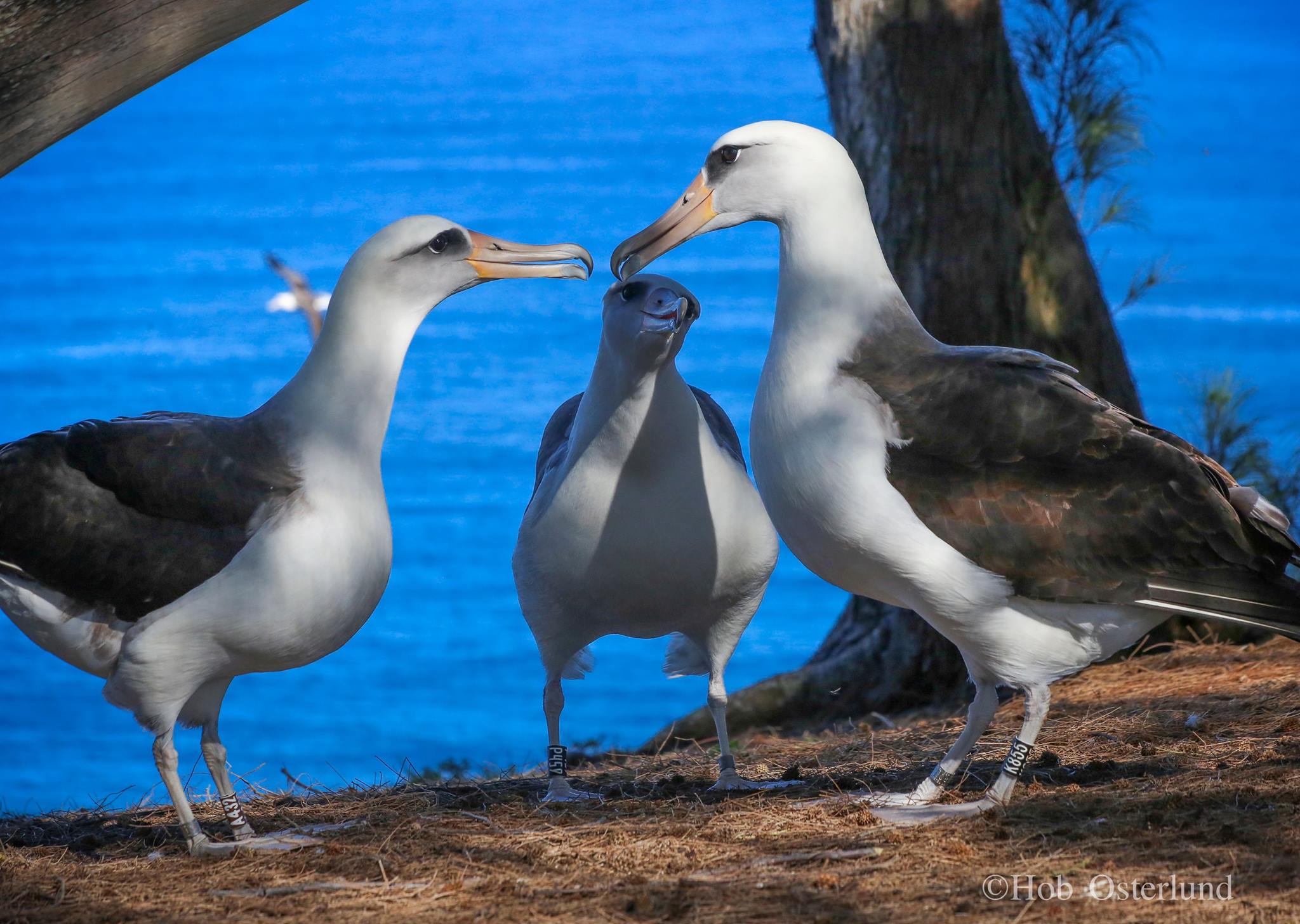
A432 on the left in January 2017 as a courting pre-breeder, its future mate (K855) is on the right
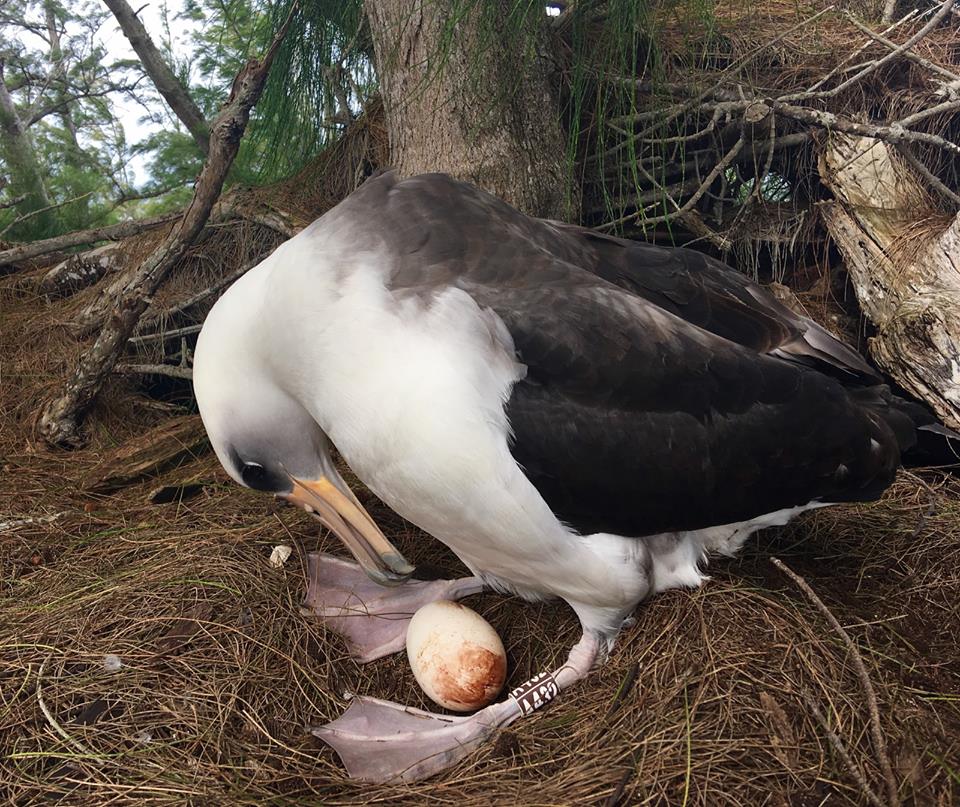
A432 crouches over its egg on 1 December 2017
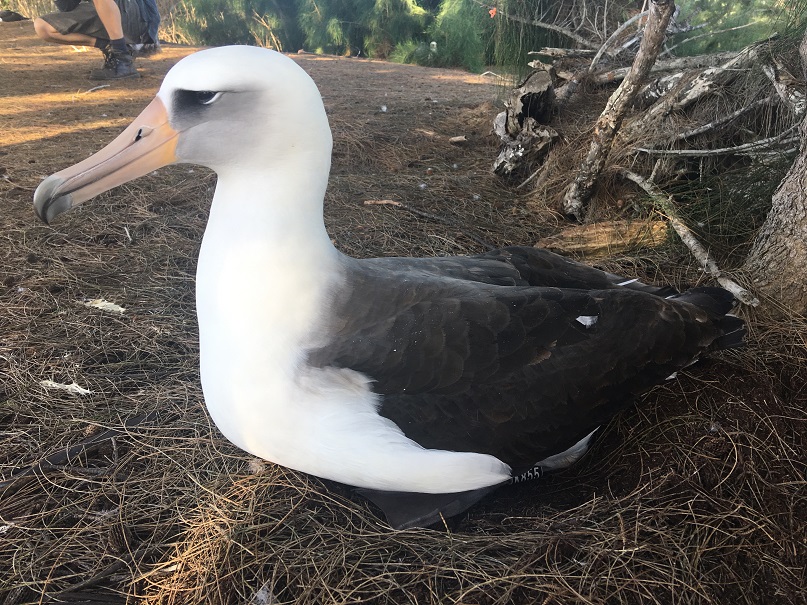
K855 takes over incubation duties
Above three photographs by Hob Osterlund, Kauai Albatross Network
Read more about the discovery of A432 breeding here.
With thanks to Tracy Anderson of Save our Shearwaters, and Hob Osterlund (Founder) and Kim Steutermann Rogers of the Kauai Albatross Network for information and photographs.
John Cooper, ACAP Information Officer, 12 December 2017

 English
English  Français
Français  Español
Español 